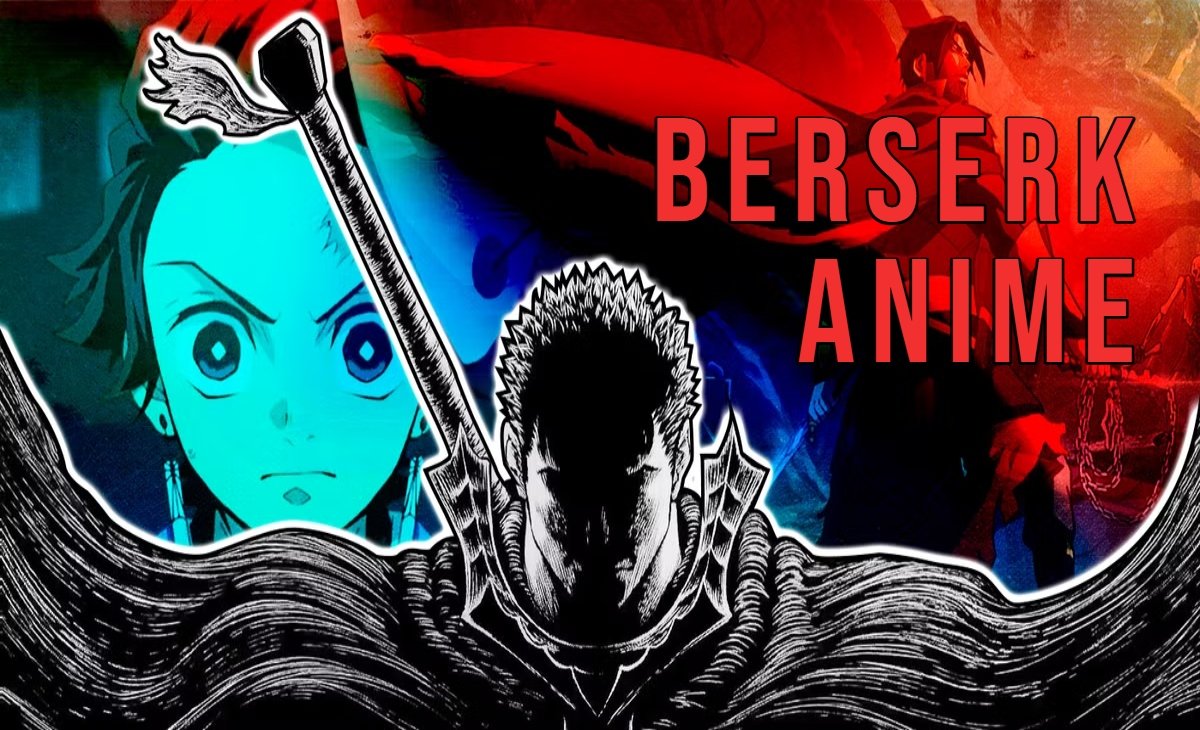Few titles have left as profound a mark on the anime world as the berserk anime. With its unflinching narrative, brutal violence, and philosophical depth, Berserk stands as a towering figure in dark fantasy storytelling. Born from the mind of Kentaro Miura, Berserk began as a manga that quickly attracted a cult following, and its anime adaptations further cemented its place in pop culture. The story of Guts, the Black Swordsman, is more than a tale of vengeance—it’s an exploration of fate, freedom, and the monstrous sides of humanity.
Despite its acclaim, the berserk anime has endured a complex and controversial production history. Each adaptation has brought with it a unique interpretation, from the hauntingly atmospheric 1997 series to the visually divisive 2016 reboot. Yet through all its iterations, the core of Berserk remains uncompromised: a grim, emotional saga filled with suffering, sacrifice, and unrelenting willpower.
The Origin of the Berserk Universe
Kentaro Miura began publishing the Berserk manga in 1989, drawing heavy inspiration from European medieval history, classical literature, and philosophical themes. The manga’s immediate success paved the way for adaptations in various formats. The story unfolds in a brutal, chaotic world where supernatural forces and political turmoil threaten human existence.
The berserk anime reflects this grim backdrop with unrelenting realism. It tells the story of Guts, a lone warrior cursed with a demonic brand that attracts monstrous beings. His journey is one of survival, revenge, and ultimately, an attempt to find peace in a world that seems devoid of it.
You Might Also Like: Statekaidz.com Brings You Seamless Anime Streams
The 1997 Berserk Anime: A Cult Classic
The 1997 adaptation of the berserk anime is widely regarded as the most faithful and emotionally resonant. Spanning only 25 episodes, this series covers the Golden Age arc, introducing audiences to Guts, Griffith, and the Band of the Hawk. The hand-drawn animation, haunting soundtrack, and raw emotion created an unforgettable experience.
This version doesn’t shy away from mature themes, including betrayal, trauma, and existential dread. Yet it also highlights friendship, loyalty, and hope, making the tragedy of the Eclipse all the more devastating. The abrupt ending left viewers craving more but also solidified the series’ legacy.
Themes That Define the Berserk Anime
The berserk anime is not just about swords and demons. It dives deeply into philosophical territory. Themes of destiny versus free will, the nature of evil, and the human condition permeate every arc. Guts symbolizes resistance, always fighting against forces that seek to control or destroy him.
The relationship between Guts and Griffith is central to the series. It’s a tale of admiration turned betrayal, ambition consumed by obsession, and the devastating price of dreams. Through them, Berserk explores what happens when ideals clash with reality.
Character Development and Emotional Depth
Guts is one of anime’s most complex protagonists. Scarred both physically and emotionally, he starts as a mercenary haunted by his past. As the series progresses, he evolves into a protector, someone who learns to open up despite enduring endless loss.
Griffith, the charismatic leader of the Band of the Hawk, is equally compelling. His transformation from visionary hero to demonic ruler underscores the tragic nature of ambition unchecked by morality. The berserk anime paints these characters not as heroes or villains but as flawed, deeply human figures navigating a world of chaos.
Visual Style and Artistic Influences
The original berserk anime was celebrated for its gritty, realistic art style. Shadows, muted colors, and minimalistic backgrounds created a bleak atmosphere that matched the story’s tone. The character designs remained true to Miura’s detailed manga illustrations.
Musical composition by Susumu Hirasawa further elevated the experience. Songs like “Forces” and “Guts’ Theme” are emotionally charged and instantly recognizable to fans. These elements combined to form an immersive world that drew viewers into its darkness and beauty.
The 2012 Berserk Movie Trilogy
After years of waiting, fans were treated to the Berserk: Golden Age Arc movie trilogy. Released between 2012 and 2013, the films reimagined the 1997 anime using modern animation techniques. The trilogy covered the same storyline but with added scenes and enhanced action sequences.
While praised for its updated visuals and expanded narrative, some fans criticized the heavy use of CGI. Despite the stylistic shift, the emotional weight of key moments, especially the Eclipse, remained powerful. The trilogy introduced a new generation to the berserk anime, ensuring its continued relevance.
The 2016 Anime Reboot: A Mixed Reception
The 2016 and 2017 adaptations of the berserk anime aimed to continue the story beyond the Golden Age arc. Unfortunately, the heavy reliance on CGI and inconsistent animation quality drew widespread criticism. The art style often failed to capture the emotional intensity of the manga.
However, the newer series did offer fans a continuation of Guts’ journey, including the Conviction arc and beyond. For those willing to overlook the visual shortcomings, the deeper exploration of characters like Farnese, Serpico, and Casca provided valuable narrative development.
Casca’s Journey: From Warrior to Survivor
Casca is one of the most significant characters in the berserk anime. Initially a fierce warrior and Griffith’s second-in-command, her life changes irreparably after the Eclipse. Her trauma, and eventual psychological recovery, is one of the most painful yet powerful arcs in the story.
The anime portrays her struggle with dignity and care, highlighting the mental scars left by betrayal and violence. Her relationship with Guts evolves into one based not on romantic fantasy but on mutual pain and healing. Casca’s story is a testament to resilience and the long road to reclaiming one’s identity.
The Influence of Berserk on Anime and Pop Culture
The berserk anime has inspired countless creators across various media. Shows like Attack on Titan, Claymore, and Devilman Crybaby borrow its themes of despair and resistance. Video games such as Dark Souls and Bloodborne openly acknowledge Berserk’s influence in their aesthetic and storytelling.
Even Western media, including The Witcher and Game of Thrones, reflects Berserk’s impact. Its unflinching portrayal of medieval brutality, moral ambiguity, and psychological depth set a standard that few series have matched.
Merchandise, Manga Sales, and Fan Community
Despite its dark themes, the berserk anime has built a passionate global fanbase. Merchandise ranges from high-end statues and apparel to video games and soundtracks. Manga volumes continue to sell in large numbers, especially after Miura’s passing in 2021.
Online communities keep the series alive through fan art, discussions, and tributes. The dedication of fans is a testament to Berserk’s power to move, challenge, and inspire across generations.
The Legacy of Kentaro Miura
Kentaro Miura’s untimely death left a void in the world of manga and anime. His meticulous artwork, complex characters, and narrative ambition redefined what manga could achieve. The berserk anime exists because of his vision, and its continued influence ensures his legacy endures.
Studio Gaga, Miura’s team, has pledged to continue the manga based on his notes and plans. While no one can fully replicate his genius, the effort reflects the deep respect the industry and fans have for his contribution.
What Lies Ahead for the Berserk Anime
The future of the berserk anime remains uncertain. Fans hope for a faithful, high-quality adaptation that does justice to the story’s depth and artistry. With advancements in animation and a growing appreciation for mature storytelling, such a project is possible.
Until then, each version of the anime, flawed or faithful, stands as a chapter in an evolving legend. The hunger for more Berserk is not just about resolution—it’s about revisiting a world that, for all its darkness, continues to illuminate what it means to be human.
FAQs
What is the berserk anime about?
It follows Guts, a warrior battling demonic forces in a dark medieval world, exploring themes of revenge, fate, and survival.
How many berserk anime adaptations are there?
There are three main adaptations: the 1997 TV series, the 2012-2013 movie trilogy, and the 2016-2017 reboot series.
Is the berserk anime faithful to the manga?
The 1997 series is considered the most faithful, while the later versions expand on the story but have mixed reception due to animation.
Why is Berserk so influential?
Its deep themes, complex characters, and raw emotion have inspired numerous anime, games, and even Western media.
Is the berserk anime complete?
No, all adaptations only cover parts of the manga, and the full story has yet to be animated.
Will there be a new berserk anime?
There are no confirmed announcements, but fans remain hopeful for a high-quality, faithful adaptation in the future.
Conclusion
The berserk anime is more than an adaptation—it is a cultural phenomenon. Despite its imperfections, it captures the soul of a story that refuses to shy away from pain, perseverance, and the brutal beauty of the human spirit. From the first swing of Guts’ massive sword to the eerie melodies of its soundtrack, every frame of Berserk is a cry against the darkness.
As fans continue to honor Kentaro Miura’s legacy, the berserk anime remains a beacon for those seeking stories that challenge the mind and move the heart. It is a masterpiece of anguish and art, forever etched into the soul of animation history.








